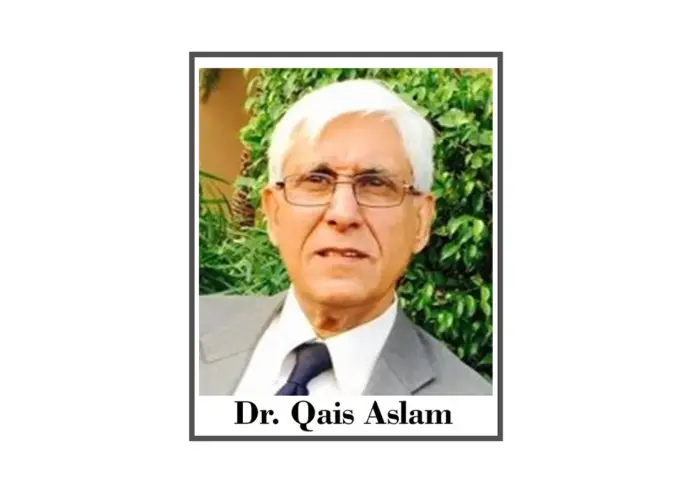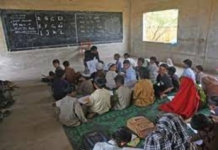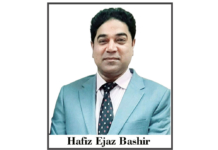An IMF 120 pages Report analyzing Pakistan’s macroeconomic outlook and based on the Memorandum of Economic and Fiscal Policies (MEFP) signed by Finance Minister Ishaq Dar and State Bank Governor jameel Ahmad, states that “A possible successor arraignment (with IMF) could help anchor Pakistan’s medium-term viability and capacity to repay”. The ‘Report’ also stressed that “Resolving Pakistan’s structural challenges, including long-term Balance of Payments (BOP) pressures, will require continued adjustment and creditor support beyond the current program period”. “The IMF assessment noted that Pakistan’s economic challenges were complex and multifaceted, and risks were extremely high. (Source: Daily Dawn dated 19 July 2023). In other words, this Report proposes another IMF program to be signed by the newly elected government for BOP stability in the medium term. The report also stresses that Pakistan should continue taking support from its creditors in the medium-term time period in order to stay viable and ‘not to default in the future.
It should be noted that by signing the IMF agreement in July the ‘threat of default’ has receded and as the IMF report points out has been transferred onto the next duly elected government. Due to this agreement, not only IMF has transferred US $ 1.2 billion to Pakistan and have increased our reserves in the IMF by another US $ 2 billion, Also, Chinees Banks have rolled over US % 600 million loan to Pakistan in addition to US $ 5 billion loan that was rolled over in the past three months by China. A “further US 4 2 billion of financial support from Saudi Arabia and US $ 1 billion from UAE after the IMF agreement in July 2023. IMF has “predicted that Pakistan’s growth is expected to gradually return to a potential five percent in the medium term, assuming sustained policy and reform implementation and adequate financial support” At the same time, IMF states that, “although base effects from post-flood recovery would provide a boost, especially to agriculture and textile sectors, unwinding of the tight management of imports will take time to percolate through the economy … constituting external challenges and the need for tight macro policies will limit the recovery”. IMF also predicted that inflation would remain at 25% and would only fall below 20% in fiscal year 2024”. (Source: Minute Mirror dated 19 July 2023).
It is true that Pakistan faces multifaceted economic challenges in its microeconomic as well as its macroeconomic structures and directions. Both microeconomic challenges hamper macroeconomic stability, while macroeconomic instability is not letting microeconomic growth and stability in all its essential for the county’s sectors that ensure near full employment and stable inflation pressures.
One of the problems is the large inefficient government itself. Pakistan’s taxpayers support in essence, seven large and inefficient governments – The Federal government that still after the eighth amendment usurps many of the ministries and departments that have been devolved to the provinces and is running with more than 80 ministers, government offices, employees etc., the four provincial governments, the governments of GB and AJ&K – all of which rely on federal grants rather than efficiently generating their own resources. More importantly these large governments, ministries, departments and government entities that usually are in deficit and rely of the tax money have not been able to provide adequate services to the people of Pakistan, especially the tax payers, but have become instruments of exploitation, corruption and ‘black money’ that runs and finances a large part of urban economy and lifestyles of both the public as well as the private sector. In other words, Pakistan ‘elite capture’ of its resources helped by the government machinery have established a decadent lifestyle of the rich and powerful at the cost of both the taxpayers as well as the poor section of society. The rich are getting richer, while the poor are getting poor and most of the children of poor do not have access to skills, education, opportunities and income generating assets, while irrespective of the IMF programs and conditionalities those that are not in the tax net also enjoy government support and ‘perks’ both legally as well as illegally. This lack of governance and rule of law is the biggest hindrance in economic revival of the economy, whatever the government or lending conditions and ‘suggestions’ the IMF imposes on the country. Capitalism and ‘free’ market also allows equal playing field and opportunities, rather than to restrict spaces for the have nots in a country.
In Capitalism the consumer (who’s buying power is shrinking due to high inflation and high unemployment as well as low productivity) and the producer (who’s capacity to produce is shrinking due to low demand, small markets and high policy interest rates, lack of technology, raw material and low skills of labor) determine economic and the government is only a regulator to ensure political stability and ensure against fraud. But when the government is a player and is based on ‘fraudulent’ behaviors by its political, administrative, legal, judicial, and economic (industrial feudal and services) elite that all the recommendations of the IMF or their trained economists cannot bring in growth that is being recommended in the IMF Report.
In the Budget 2022-2023 it was envisaged a FBR revenue of Rs. 7,470 billion but in the revised Budget document Rs. 7,200 billion were collected, but the government under so called “IMF pressures’ have envisaged a FBR revenue of Rs. 9,415 billion – Rs 2,215 more than what the FBR were able to collect last year against an envisaged expenditure of Rs. 14,485 billion in 2023-2024. This enhanced revenue collection and expenditures would further shrink both the buying power (on the demand side) and the investment capacity (on the supply side) through contractionary fiscal measures and high (22%) policy interest rates as contractionary monetary policy might reduce demand pull inflation but coupled with rising energy (electricity, gas and petroleum products) prices (again on pressure of IMF) would definitely increase cost-push inflation when the prices in both dollar terms as well as in rupee terms of all four factors of production (especially foreign inputs due to high dollar exchange rates in rupee terms) are increasing both because of market pressures as well as because of government inefficiencies that are translated into production costs.
What is being said, here is that the economy is already growing at 0.3% and the growth rate of agriculture was down to 1.6%, manufacturing sector was minus 3.9%, commodity producing sector was minus 0.5% and of servicing sector was down to 0.9% and with low productivity of labor, lack of technology, R&D, lack of access to financial resources, water issues, expensive energy, lack of governance, inefficiencies of corrupt practices, small fragmented agriculture that is still reeling from floods etc. And a service sector that has failed to earn foreign exchange, how would the country’s 406 million population cope with new economic realities without serious institutional, legal, and structural reforms?
Pakistan needs to rethink its priorities. Is lending from IMF, borrowing from its friendly countries, and leasing its ports and Airports as well as its other assets to foreigners when its own large and medium entrepreneurs are transferring funds and assts to other countries, the solution or as recommended for medium term time period?
Or, it should be suggested that we should have small, viable governments, rule of law, justice for all and the government should concentrate on transparent, robust and accountable institutional development and restructuring on one hand and gear the country towards a viable productive youth that is capable of innovating, producing and exporting diversified products of Pakistan’s comparative advantage from its vast landmass, flora and fauna, mineral resources, tourism, human resources etc. Rather than relying on traditional goods and services that are not demanded in the future economic interactions. Our human resource especially our youth is our strength, provided we equip them with both productive as well as entrepreneurial skills. Our water resources are our advantage, if we start preserving water and producing energy from our own indigenous resources. Joint ventures should be encouraged between Pakistan’s [private sector and world technology and management giants and bureaucratic bottlenecks should be avoided if Pakistan wants to achieve both internal as well as external economic stability. There are many ways to earn foreign exchange and we are not taping these vital for us potentials.
Let us rely of our own strengths and transform our own weaknesses into strengths creating synergies, rather than following dictates of others that are short-lived both because of the short-sightedness of our own governments and large businesses who do not want to engage the rest of the country into a holistic economic process. It is difficult, it is long-term, but a journey of thousands of miles starts with a single step, one at a time, but collectively and not leaving anyone behind. Only then can we reform this country into its grandeur and might that was the dream of its founding father and is the dream of its children now.







